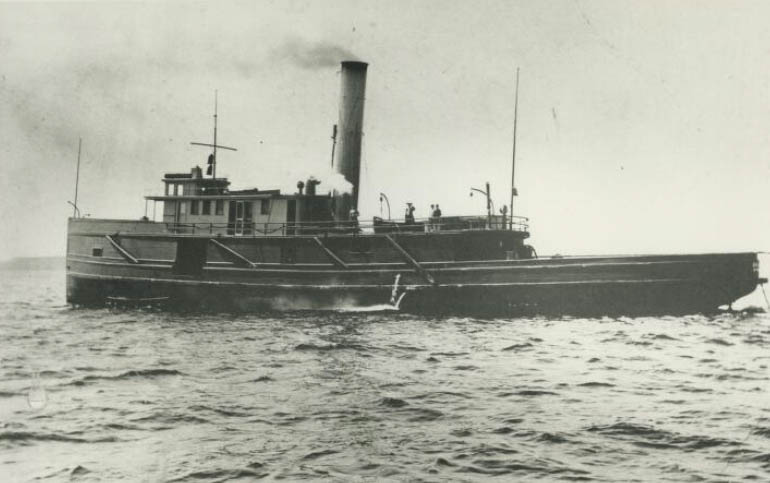The Balize was a tugboat with a wooden hull that operated on the Great Lakes in the United States and Canada. She was propelled by a single cylinder steam Steeple engine and fueled by a single coal-fired Scotch marine boiler. She measured 131.50 feet long, 21.58 feet wide, and 12 feet tall.
Ira Lafrinier built the Balize as the Mary Grandy in Cleveland, Ohio in 1863. The US Navy purchased her on August 2, 1864, and renamed her USS Bignonia. On September 14, 1864, she received her commission. The Union Navy used her as a tugboat to support the Union Navy’s blockade of Confederate waterways. The Bignonia served as a tug with the North Atlantic Blockading Squadron until April 1865. In April 1865, she was reassigned to the West Gulf Blockading Squadron.
On July 12, 1865, she was purchased by L. Burrows of Stonington and renamed Balize. The Balize grounded off Stony Point on September 22, 1871, and was later removed by the tug Vulcan. In Buffalo, New York, she was rebuilt with two 460-horsepower compound engines. The Balize was rebuilt in Detroit on June 11, 1881, to transport logs across Lake Huron. She was sold to the Detroit Tug & Transit Company on April 28, 1883. The Balize collided with the steamer A.W. Coulton near Belle Isle Park on the Detroit River in September 1883. In December of that year, she caught fire in Detroit.
The Balize and another tug, the Wales, rescued the wooden freighter SS Kaliyuga from the Detroit River near Amherstburg, Ontario, on November 7, 1900. The tugs were supposed to transport the Kaliyuga to Erie, Pennsylvania, but they were unable to do so due to a storm and engine problems with the Balize. When the Balize was replaced by the tug Harvey D. Goulder, the Kaliyuga arrived in Erie, Pennsylvania. Victoria Harbour Lumber Company of Virginia purchased her in 1902.
The Balize was taken to Midland, Ontario, in November 1915, and dismantled. Her hull can be found on the north shore of Midland Bay.







